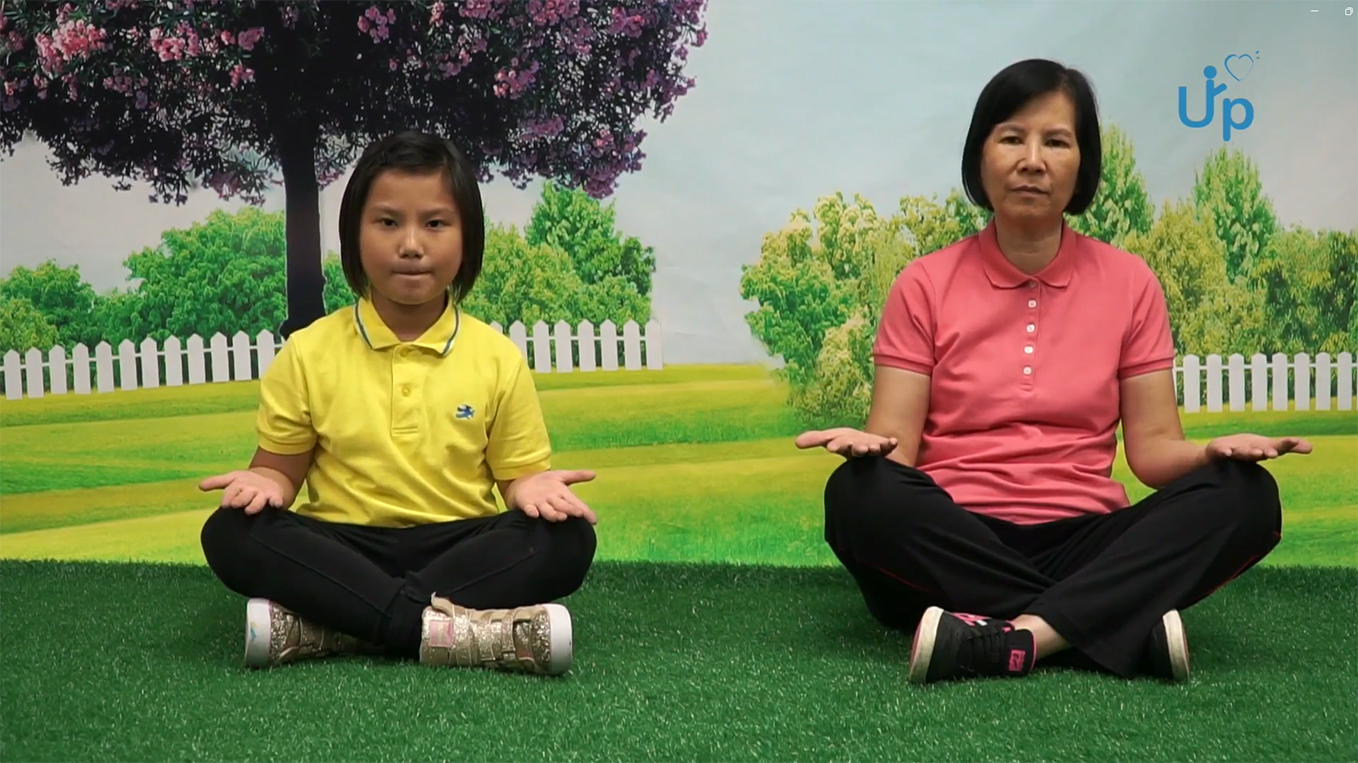Lesson 2: Relaxation Exercise (Part 2)
Teaching Objectives:
Introduces simple relaxation exercises and teaches students how to use relaxation skills to relieve tension and stress and develop a 'relaxation response'. This lesson introduces varies relaxation exercises as coping skills to lower the stress level of the individual and worry less about their life.
Review the content in previous class
- Put the glass down
- Benefits of relaxation exercise
- Muscle relaxation skill
- Ask student to do the demostration
- Did they use this skill in last 7 days? Ask student to share their story.
Stress Reduction Exercise Demonstration Video
The following video teaches a set of simple relaxation exercise to help calm the mind and stretch tight muscles.
Teaching guide
2. Teacher invite student coaches to demostrate the exercise in front of other students.
3. Point out areas that need attention:
- Forearm Rotation: do it slowly
- Finger Stretch: feeling the tension of your finger
- Neck Stretch: move your head up and down as if you are bowing, keep your back straight
- Head Rotation: Facing forward tuck in your chin, turn your head slowly to the right, then back to your original position, repeat 5 times. Then turn your head to the left and back to your original position, repeat 5 times. Keep your shoulders face forward. You should feel the stretching of the muscle and tendons in the front chest and the side of the body.
- Chest Expansion Exercise: keep your back straight
4. Afterward, teacher invites students to share their feelings.
5. Teacher asks students to suggest situations they might use relaxation exercises to relieve stress
E.g. Revision time, before the test, before sleeping, long working hours, etc.
6. Guide students to find the best relaxation exercise to practice, which is the most relieved one based on their own needs, preferences and experiences.
Five actions are mentioned in the video:
1) forearm rotation,
2) finger stretch,
3) neck stretch,
4) head rotation,
5) chest expansion
Mindful game: Simon Says
The Benefits:
Time Required: 20 minutes
What you need: Room to move
The classic Simon Says game uses both mindful seeing and listening skills. When the teacher or student coach (the designated Simon) issues his/her command verbally and shows what to do visually, kids are challenged to pay attention to both visual and auditory input and discern whether or not to act.
The clue is that there’s a conflict between what they see visually and what they are instructed to do verbally.
Remember, you are only allowed to act when the leader says “Simon says” before the instruction.
We tend to act without thinking, and this game demonstrates just that.
Simon Says is a fun way to practice mindfulness and relaxation exercise by paying attention to outer experiences.

How to play:
- Choose who will take the role of Simon. It’s best if you(teacher) model first. Next, Simon stands in front of the students and issues instructions for relaxation exercise and shows how to do them.
- The instructions should be followed only if prefaced with the phrase “Simon says”.
- Players win when they follow an instruction that is preceded by the phrase “Simon says”.
- Players fail if they perform the action(relaxation exercise) without the “Simon says” phrase or if they fail to perform the action when the phrase “Simon says” is used before the instruction.
- If you want keep the game less competitive, you don’t have to eliminate players when they fail.
- The correct relaxation exercise acted and ability to distinguish fake commands are what matter in this fun game.
